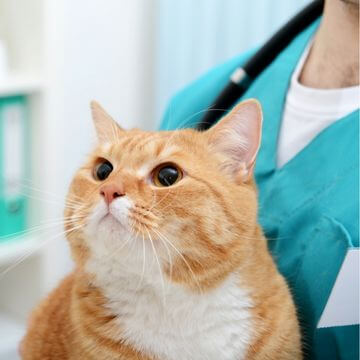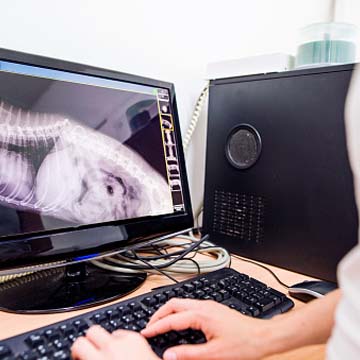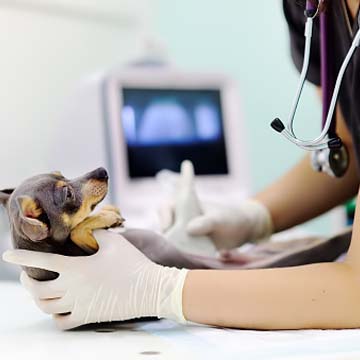Our Services
Pet In-House Diagnostics Veterinary Service in Lexington, SC
Learn more about the pet in-house diagnostics care services we offer below.
Pet In-House Diagnostics
When a pet is sick, we all want to discover the source of the illness as soon as possible. That is why diagnostic skills and technology are an important part of our veterinary practice at Cherokee Trail Veterinary Hospital.
Laboratory Tests for Pets
Most dogs and cats receive basic laboratory tests at every wellness visit, as well as when they are sick, injured, or having a surgical procedure.
In a healthy animal, we may run laboratory tests such as:
- CBC (complete blood count) to measure the number of red blood cells, white blood cells, and platelets, to help diagnose infections and disease
- A chemistry panel to measure electrolytes, enzymes, and chemical elements, such as calcium and phosphorous levels, to determine the condition of internal organs
- Urinalysis to test the urine for substances such as protein, sugar, white blood cells, or blood, to diagnose urinary tract infections, diabetes, dehydration, kidney problems, and more
If your pet becomes sick or injured, we use these and other laboratory tests to confirm or rule out diseases or to determine how a patient is responding to treatment.
When a patient requires surgery, we perform certain screening tests to identify any risk of complications from anesthesia. Surgery screening is recommended for patients of every age and health status.
Veterinary Diagnostic Tools
You may see our veterinarians using a few common tools at your pet’s exam.
These tools are:
- Microscope—Providing up to 1,000-fold magnification, we can take a detailed look at all kinds of things including blood cells, skin scrapes, ear smears, urine samples, and more
- Stethoscope—An essential tool and a part of every physical exam, this allows us to listen to the lungs and heart and tells us a great deal about how they sound
Pet Digital Radiology
While modern technology is no substitute for a caring veterinary professional, there are many tools we use to help us to diagnose and treat our patients. Cherokee Trail Veterinary Hospital uses the most advanced diagnostic imaging technology to support our patients when they need it the most.
Modern Digital X-ray Technology
In much the same way that digital cameras have revolutionized photography, digital technology has changed the face of radiology. We can now get better quality X-rays and use less radiation at the same time, providing a safer, more effective process.
Instead of traditional X-ray film, there is a sensor to detect X-rays and convert them into diagnostic images almost immediately. No need for a dark room or film-developing chemicals anymore. Additionally, digital X-rays can be copied onto a CD or emailed to a specialist for consultation.
Pet Ultrasound Medicine
Ultrasound uses the reflection of sound waves from the tissues of the body to generate images. This lets us look at the internal structure of organs in the abdomen or get a detailed analysis of heart function.
An advantage of ultrasound is the ability to examine an organ in motion, from measuring blood flow to viewing a beating heart. Of course, it is also a safe and effective tool to evaluate pregnancy in dogs and cats.
Images Through the Endoscope
Another diagnostic imaging tool we use is the endoscope. This technology looks like a small tube or hose, with a light and video camera fitted to the tip. A minimally invasive advancement in diagnostic and surgical technology, an endoscopy allows us to look in tight places and display a detailed image on a video screen. It works especially well for procedures in very small areas such as ear exams, deep ear cleanings, and nasal exams.
Veterinary Services
Below are all of the veterinary services we offer at Cherokee Trail Veterinary Hospital. If you have any questions regarding our services, please feel free to call us.



